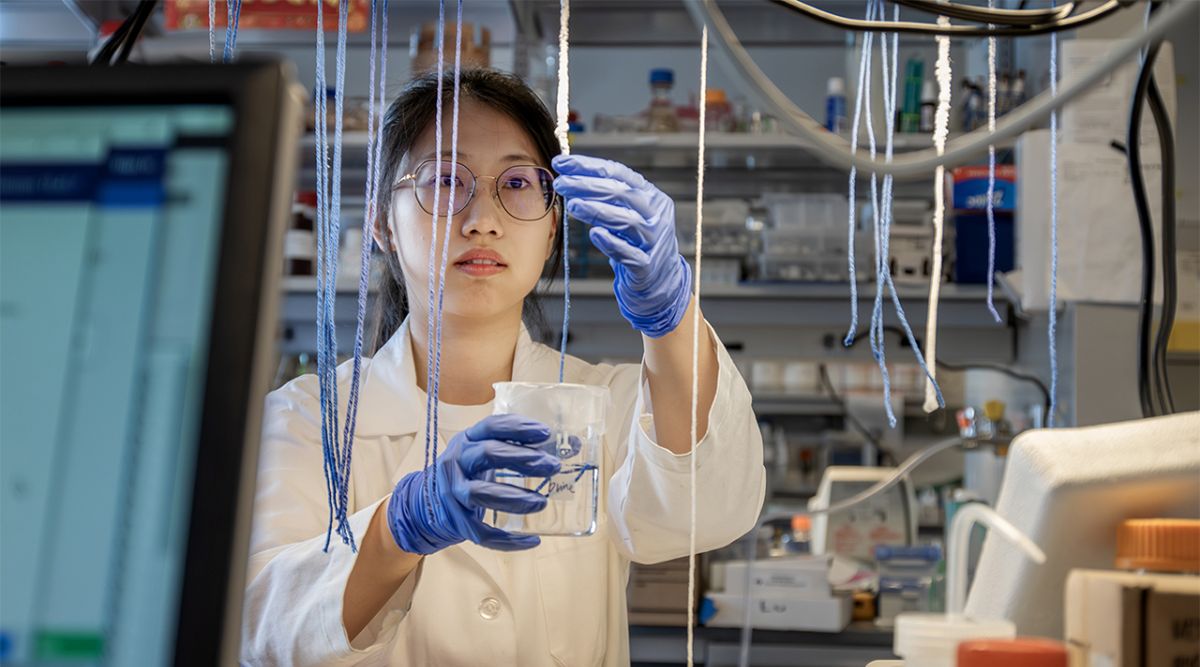The device you are reading this on probably uses a lithium-based battery. So does the iPhone 15 series that launched yesterday. So do all modern batteries, including the ones found in electric vehicles. For something that is to a clean future, Lithium production is an extremely resource-intensive and time-consuming process. Princeton engineers have developed a new string-based technology that could change that.
A large majority of the lithium produced in the world is extracted from “brine reservoirs” located in salt flats. This method of production can require hundreds of square kilometres, and it often takes months or even years to produce lithium that can be used in batteries.

The total demand for lithium was 500,000 metric tons of lithium carbonate equivalent in 2021 and it is expected to grow to between two to three million tons in 2030, according to McKinsey. In 2015, not all that long ago, less than 30 per cent of the demand was for batteries, with the rest split between ceramics and glasses, greases, metallurgical powders, polymers and other uses. By 2030, batteries will account for 95 per cent of the demand, growing with the penetration of electric vehicles and energy storage devices.
Also read | Part human kidneys grown inside pig embryos for the first time
Time-consuming conventional processes for lithium extraction could make this difficult. But now, researchers at the University of Princeton have developed a technique that can drastically reduce the amount of land and time needed for production. This can improve production at existing lithium factories in the world while also unlocking sources that may have been too small or diluted to have been worthwhile in the past, according to the researchers.
Lithium on a string
The researchers used a set of porous fibres twisted into strings and engineered them to have a water-loving (hydrophilic) core and water-repelling surface. When one end is dipped in a salt-water solution, the water travels up the string because of capillary action. This is the same process used by trees to raise water from roots to leaves.
Then, the water evaporates quickly from the string’s surface. This leaves behind salt ions such as sodium and lithium. The water will continue to evaporate like this as the salts become increasingly concentrated, eventually forming sodium chloride and lithium chloride crystals. This can be harvested relatively easily.
Also read | Webb telescope discovers methane, carbon dioxide on potential ocean planet
The strings themselves are not very hard to make. “The raw strings were purchased from commercial vendors, and we treated them with chemicals to make them more hydrophilic inside and hydrophobic outside,” said Zhiyong Jason Ren, corresponding author of a paper on the technique published in the journal Nature Water, to indianexpress.com in an email.
The strings don’t just concentrate the salts. Since lithium and sodium have different physical properties, they crystallise at different locations on the strings. Sodium, with its low solubility, crystallises on the lower part, while the highly soluble lithium salts crystallise near the top. This, according to Ren, allows lithium to be “recovered automatically” as a concentrate solution without the use of additional chemicals.
How the strings can fit into conventional lithium production methods
Conventional methods of extraction rely on a series of massive evaporation ponds that concentrate lithium from saltwater reservoirs, salt flats of underground aquifers. This means that operations are only commercially viable in a few locations around the world that meet some important criteria—a high starting lithium concentration, abundance of cheaply available land, and a hot and dry climate to maximise evaporation.
The new technique can remove some of these prerequisites by essentially “putting the pond on a string.” The researchers estimate that it can cut the amount of land required by 90 per cent while accelerating the evaporation technique by more than 20 times. This could mean that initial lithium harvest can possibly happen in less than one month, compared to the months and sometimes even years it takes now.
Most Read 1Chandrayaan-3 mission: Dawn breaks on Moon, all eyes on lander, rover to wake up 2As Indo-Canadian relations sour, anxiety grips Indian students, residents who wish to settle in Canada 3Karan Johar says Sanjay Leela Bhansali did not call him after Rocky Aur Rani: ‘He’s never called me but…’ 4Gadar 2 box office collection day 40: Hit by Shah Rukh Khan’s Jawan onslaught, Sunny Deol movie ends BO run with Rs 45 lakh earning 5Shubh’s tour in India cancelled: Why is the Canada-based singer facing the music?
It will also allow us to look into new areas to extract lithium from. For example, defunct oil and gas wells and geothermal brines that are currently considered too small or too diluted for lithium extraction could become viable sources. It might even open the doors to try extraction in humid climates.
But the technology has currently only worked on a laboratory scale and the researchers are working on making it commercially viable. “We need to test the durability of the strings and scale up the systems for more complex conditions,” added Ren.
Also ReadChandrayaan-3 mission: Dawn breaks on Moon, all eyes on lander, rover to …NASA’s Parker Solar Probe flies through powerful explosion from Sun, take…On India’s first solar mission, Aditya-L1 begins collecting data: ISROWatch this space: ‘Alien corpses,’ NASA UFO team director & Webb’s ‘life …
The team is already working on a second-generation technique that will increase the efficiency and output of the system while allowing more control over the crystallisation process. They are also investigating if it can be used to extract lithium from seawater.
© IE Online Media Services Pvt Ltd


